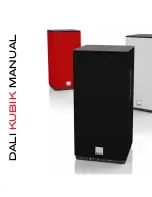
Page 13
For technical questions, please call 1-888-866-5797.
ITEM 59206
SAFETY
SETU
p
Op
ERA
TION
M
AINTENANCE
Operating Instructions
Read the ENTIRE IMpORTANT SAFETY INFORMATION section at the beginning of this
manual including all text under subheadings therein before set up or use of this product.
Inspect tool before use, looking for damaged, loose, and missing parts.
If any problems are found, do not use tool until repaired
Generator pre-Start Checks
1. Inspect engine and equipment, looking for
damaged, loose, and missing parts before set
up and starting. If any problems are found,
do not use equipment until fixed properly.
2. Brush off outside of Engine.
3. Remove the air filter cover and the air
filter elements and check for dirt. Clean
as needed and replace them.
4. Install carbon monoxide alarm(s) with battery
backup in all nearby buildings according
to alarm manufacturer′s instructions.
Checking and Filling Engine Oil
NOTICE: Your Warranty is VOID if the engine’s
crankcase is not properly filled with oil before
each use. Before each use, check the oil level.
Engine will not start with low or no engine oil.
1. Make sure the engine is stopped and is level.
2. Close the Fuel Valve.
3. Clean the top of the Dipstick and the
area around it. Remove the Dipstick
by threading it counterclockwise, and
wipe it off with a clean lint free rag.
4.
Full level
Full level
Reinsert the Dipstick without threading it in and
remove it to check the oil level. The oil level
should be up to the full level as shown above.
5. If the oil level is at or below the low mark add the
appropriate type of oil until the oil level is at the
proper level. SAE 10W-30 oil is recommended
for general use. (The SAE Viscosity Grade chart
on page 20 in the Service section shows other
viscosities to use in different average temperatures.)
6. Thread the dipstick back in clockwise.
NOTICE:
Do not run the engine with too little oil.
Engine will shut off if engine oil level is too low.
Checking and Filling Fuel
WARNING!
TO pREVENT SERIOUS
INJURY FROM FIRE:
Fill the fuel tank in a well-ventilated area
away from ignition sources. If the
engine is hot from use, shut the engine
off and wait for it to cool before adding
fuel. Do not smoke.
1. Clean the Fuel Cap and the area around it.
2. Unscrew and remove the Fuel Cap.
3. If needed, fill the Fuel Tank to about 1 inch
under the fill neck with 87 octane or higher
unleaded gasoline that has been treated with
a fuel stabilizer additive. Follow fuel stabilizer
manufacturer’s recommendations for use.
Note: Do not use gasoline containing more than
10% ethanol (E10). Do not use E85 ethanol.
Note: Do not use gasoline that has been stored in a
metal fuel container or a dirty fuel container. It can
cause particles to enter the carburetor, effecting
engine performance and/or causing damage.
4. Then replace the Fuel Cap.
5. Wipe up any spilled fuel and allow excess
to evaporate before starting engine.
To prevent FIRE, do not start the engine
while the smell of fuel hangs in the air.














































